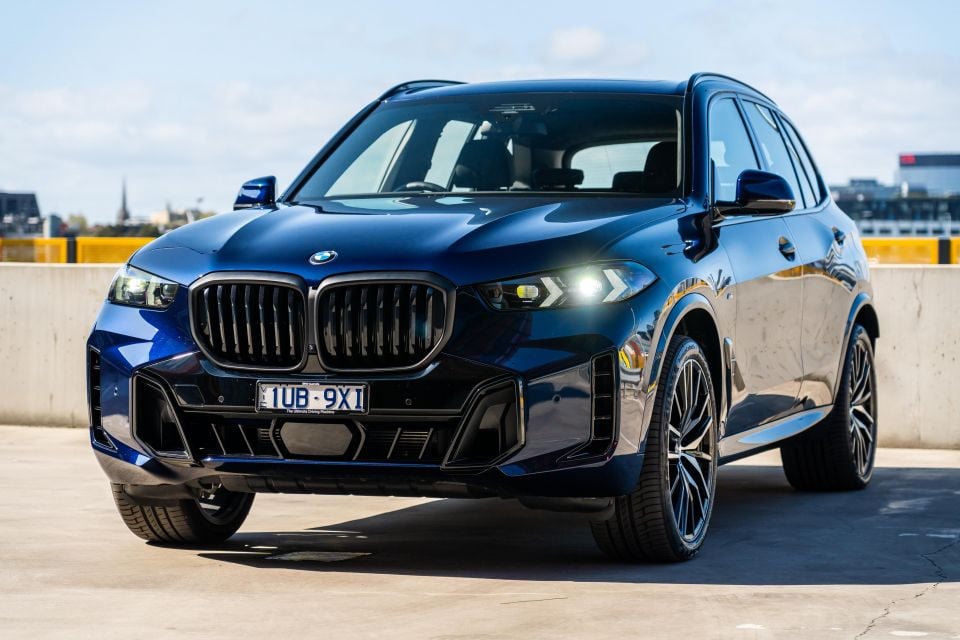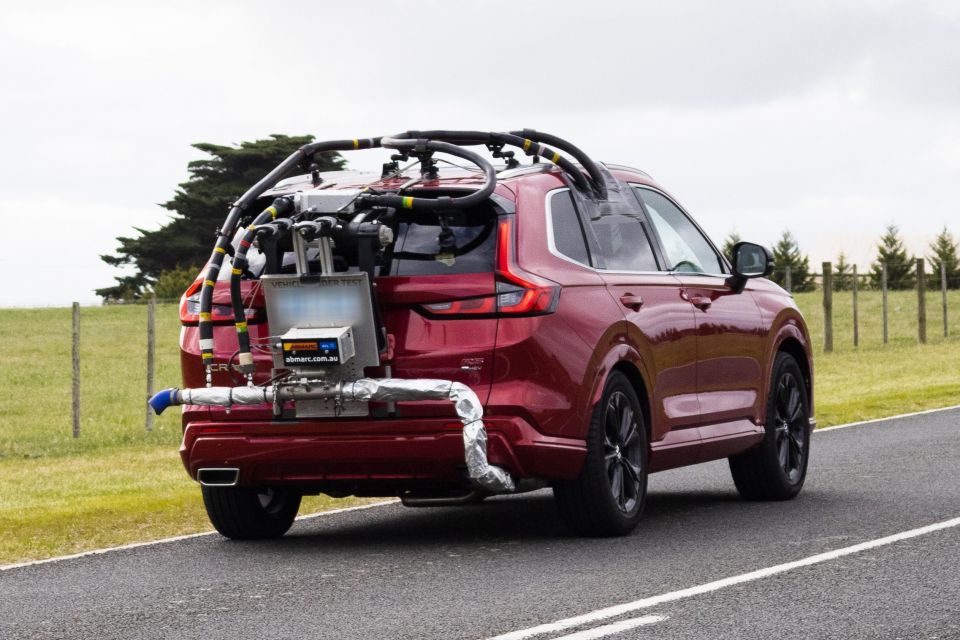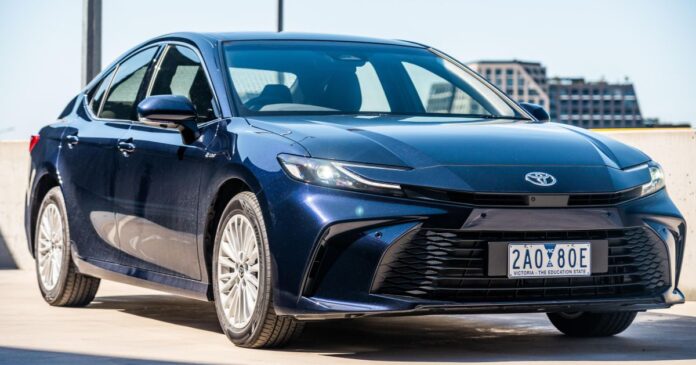The Australian Automobile Association (AAA) has put more new models under the microscope as part of its Real-World Testing Program, including vehicles it has tested before, and found many of them can’t match their fuel economy claims.
It tested new or updated versions of the Hyundai Tucson, Kia Sportage, MG HS and Toyota Camry, and found they had larger gaps between their laboratory-based fuel economy claims and results from real-world testing, though the BMW X3 and Mercedes-Benz GLC improved since the last time they were tested.
The Camry also had the second largest disparity between its official claim and the real-world testing result, at 20 per cent (4.8L/100km vs 4.0L/100km). The mid-size sedan also emitted more CO2 than advertised (112g/km vs 91g/km).
Only the Chery Tiggo 4 Pro small SUV had a wider gap in fuel consumption figures, at 21 per cent (8.8L/100km vs 7.3L/100km). It also emitted 203g/km of CO2, against a lab result claim of 166g/km.
CarExpert can save you thousands on a new car. Click here to get a great deal.
Other models tested managed to match their fuel consumption claims (the Mercedes-Benz GLA) or even best them (the BMW X5, which had 15 per cent better fuel economy and 15 per cent lower CO2 emissions).
In 2022, the federal government allocated $14 million to the AAA – the peak body for Australia’s state-based motoring clubs, such as the NRMA, RACV and RACQ – to conduct real-world testing of 200 vehicles previously only tested under lab conditions.
In addition to testing the fuel economy claims of petrol, diesel and hybrid models, it has also recently announced its first tests of electric vehicle (EV) range claims.
“Real-world testing is an important tool to help consumers and fleet buyers save money by identifying which cars perform as advertised and which fall short,” said AAA managing director Michael Bradley.

“At a time when regulators around the world are placing increasingly stringent emissions standards on car makers to reduce emissions, Real-World Testing is also producing important data to indicate how car makers are responding to these requirements.”
The AAA has said the need for real-world testing was first demonstrated by the Volkswagen emissions scandal commonly referred to as Dieselgate, in which Volkswagen vehicles were found to use ‘defeat device’ software to trick lab tests, and it claims real-world data is important during the cost-of-living crisis for households and fleet buyers alike.
But the AAA has been criticised for causing confusion with its real-world testing, which is conducted from a facility in Geelong and on public roads in and around the Victorian city.
“All vehicles, including EVs, sold in Australia are tested under strict laboratory conditions set out in Australian Design Rule 81/02,” said FCAI chief executive Tony Weber in August.

“This consistent methodology ensures vehicles can be reliably compared, regardless of brand or model.
“Tests conducted outside the ADR process are influenced by many variables, including traffic, terrain, weather and driving style. No two drivers or journeys are the same.
“We support transparent, evidence-based information for consumers, but it must be consistent. When conflicting figures are published, it undermines confidence and causes unnecessary confusion.”
The Electric Vehicle Council also dinged the AAA for its real-world testing of EVs.
Below are the latest fuel consumption results, though you can view more detailed overviews for each test vehicle on the AAA website.
All models tested were 2025 examples, apart from the Cupra Formentor and Subaru WRX which were from 2024. Below we’ve detailed the fuel consumption claims and real-world testing results for each of the vehicles in the AAA’s latest round.
SUVs
| Model | Variant | Mandated lab test claim (L/100km) | AAA testing result (L/100km) | Disparity |
|---|---|---|---|---|
| BMW X1 | xDrive20i | 7.2L/100km | 7.3L/100km | +2% |
| BMW X3 | 20 xDrive | 7.5L/100km | 7.3L/100km | -3% |
| BMW X5 | xDrive30d M Sport | 7.8L/100km | 6.7L/100km | -15% |
| Chery Tiggo 4 Pro | Ultimate | 7.3L/100km | 8.8L/100km | +21% |
| Chery Tiggo 7 Pro | SE | 7.0L/100km | 7.7L/100km | +10% |
| Cupra Formentor | VZx | 7.7L/100km | 8.4L/100km | +9% |
| Lexus UX | 300h | 4.2L/100km | 4.9L/100km | +16% |
| Mazda CX-80 | G40e Pure | 8.4L/100km | 8.0L/100km | -5% |
| Mercedes-Benz GLA | 250 4Matic | 7.9L/100km | 7.9L/100km | 0% |
| MG HS | Vibe | 6.9L/100km | 7.2L/100km | +5% |
| Nissan Qashqai | ST | 6.1L/100km | 6.8L/100km | +11% |
| Subaru Crosstrek | Hybrid L | 6.5L/100km | 7.2L/100km | +10% |
| Volvo XC60 | Plus B5 | 7.6L/100km | 8.0L/100km | +6% |
Passenger cars
| Model | Variant | Mandated lab test claim (L/100km) | AAA testing result (L/100km) | Disparity |
|---|---|---|---|---|
| Subaru WRX | Sportswagon tS | 8.5L/100km | 8.3L/100km | -3% |
| Toyota Camry Hybrid | Ascent | 4.0L/100km | 4.8L/100km | +20% |
Commercial vehicles
| Model | Mandated lab test claim (L/100km) | AAA testing result (L/100km) | Disparity |
|---|---|---|---|
| Ford Ranger Raptor | 11.5L/100km | 12.3L/100km | +7% |
| Hyundai Staria Load | 7.0L/100km | 7.2L/100km | +4% |
MORE: Opinion: Why ‘real-world’ EV range testing is fake news
MORE: Real-world testing shows Ford Ranger among emissions-breaching models
MORE: Real-world testing shows not all hybrids are created equal at saving fuel
MORE: Real-world tests reveal the cars that are thirstier than they claim
MORE: Real-world fuel use shows popular Australian new cars drastically exceed claims
